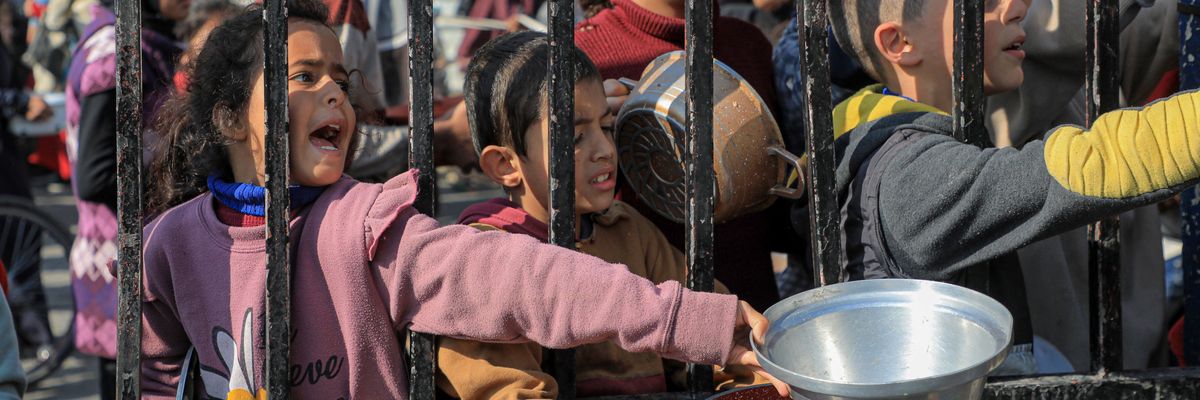The 10 biggest global crises—including Israel's war on Gaza—forced more than 10 million children to flee their homes in 2023.
That figure likely puts the total number of displaced children at more than 50 million, a new record, Save the Children said in an analysis
published Tuesday. The number of children displaced worldwide has also more than doubled from around 20.6 million in 2010. While the number of displaced people overall reached a record 114 million in October 2023, children are being pushed from their homes at an even faster rate than adults and face unique vulnerabilities.
"While the statistics are overwhelming, a displaced child is not just a number. It's a child who has most likely witnessed the kind of violence or destruction no child should ever have to see, before having to leave behind everything that they know," Save the Children's global humanitarian director, Gabriella Waaijman, said in a statement. "When children lose their homes, they lose almost everything: their access to healthcare, education, food, and safety."
Save the Children focused both on children forced to leave their home countries and those displaced within their country of origin. It based its calculations on data from organizations like the United Nations' International Organization for Migration and the U.N. Refugee Agency.
Crises created by conflict and the climate emergency are displacing an average of 29,000 children a day, for a total of 10.5 million in 2023. The greatest number of children were displaced in Sudan by fighting that
ignited last April between the country's military and a paramilitary faction. Hostilities have forced around 4.1 million children from their homes.
The second highest number of displaced children, at as many as 1.6 million, were driven from their homes in Somalia last year by a combination of flood, drought, insecurity, and violence. There are now 2.4 million Somali children displaced by these ongoing emergencies. Scientists have
concluded that global warming driven by the burning of fossil fuels increased the severity of both drought and heavy floods in the Horn of Africa.
"We snuggle in our clothes and snuggle our children in our clothes to get warm."
Another ongoing crisis for children beginning in 2023 is Israel's assault on Gaza, which the International Court of Justice
determined could plausibly amount to genocide. The situation in the occupied Palestinian territory was one of the top five crises that escalated in 2023, according to Save the Children. Israel's bombardment and ground invasion of Gaza forced around 890,000 children from their homes between October 7 and December 21, and Gaza now has one of the highest rates of internal displacement in the world.
"We left everything behind. All our possessions, everything we own, our clothes and bedding, everything remained behind," Shadi, a 40-year-old farmer from northern Gaza who fled south with his family, told Save the Children. "During the day, it's hot inside the tent. And when night comes, it's cold. It's freezing cold until 7:00 am. We snuggle in our clothes and snuggle our children in our clothes to get warm."
The other crises Save the Children considered were in Congo, Turkey and Syria due to an earthquake, Afghanistan, Myanmar, Ukraine, Ethiopia, and South Sudan.
Overall, children represent around 40% of all displaced people. They are especially at risk when they are forced from their homes because they can lose access to education, healthcare, and other essential services. At the same time, families that flee often face financial precarity, which can put children in danger of child labor, sexual exploitation, crime, or being forced to serve as child soldiers.
"We need to act urgently and keep the rights of children—who are the least responsible for the conflicts and climate emergencies that uproot them—at the center of our responses to displacement," Waaijman said.
